Este post também está disponível em:
Português
English

Icó is a Brazilian municipality in the state of Ceará and is a living architectural record of the past.
The city of Icó was the third village installed in Ceará and has an architectural site dating from the 18th century;
The city is a living architectural record of the past.
Between the eighteenth and nineteenth centuries, Icó was the most important cattle trading post in Ceará.
Located in the region of Cariri, its colonization by the Portuguese met stiff resistance from the Cariris Indians, lords of the region.
Elevated to the category of village in 1738, a significant area of the city in its urban center is listed by the Federal Historical Heritage.
Highlights include the Ribeira Theater and the Town Hall and Jail, both built in 1860, and the Church of Nossa Senhora da Conceição do Monte, recently restored and listed by the National Historical Heritage.
Magnificent townhouses with Portuguese tiles dot the city.
A site that is formed by the urban perimeter planned by the Metropolis in the first half of the seventeenth century.
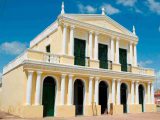
An urban project with well-drawn and straight streets (delimiting relatively uniform blocks), very large squares, public buildings.
The nuclear site is located between the current streets: 7 de Setembro, Ilídio Sampaio and Benjamin Constant, closing on the east side with the main square.
Tourist spots of Icó
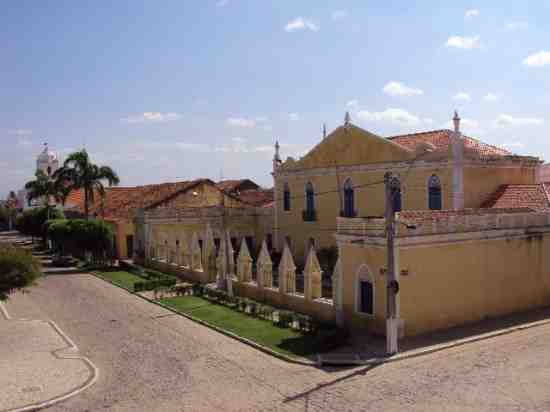

Icó - Pontos Turisticos
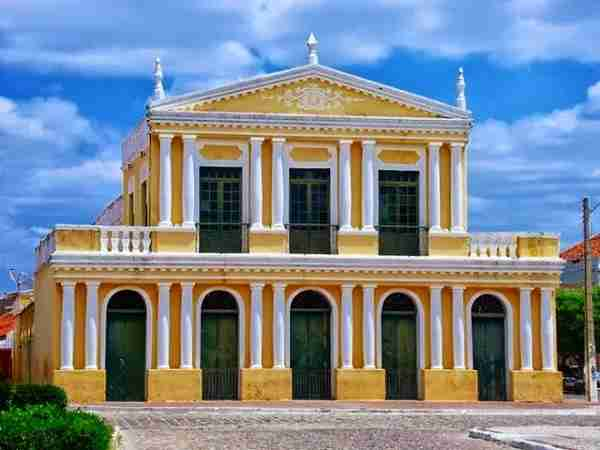
Icó - Vídeo da Cidade

Icó - Guia de Turismo e História
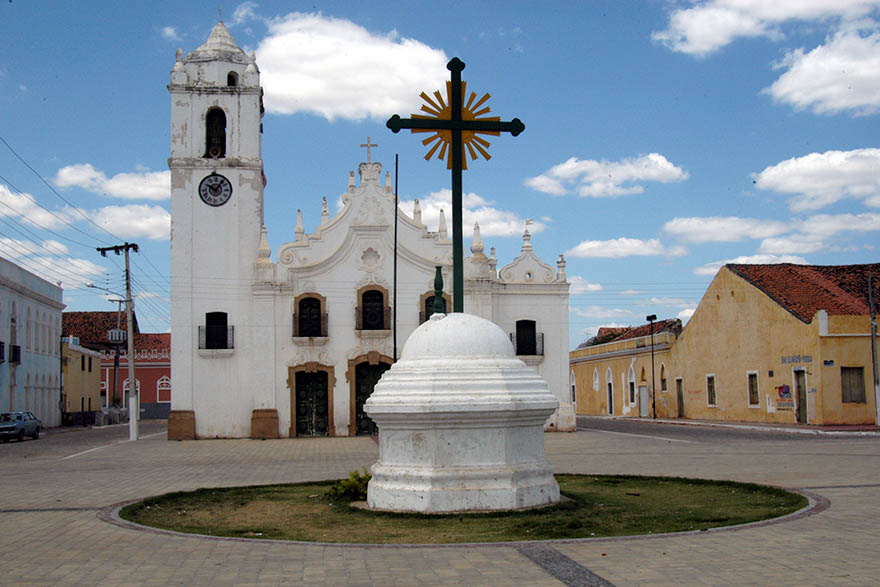
Arquitetura e História de Icó no Ceará07:58
Teatro da Ribeira do Icós
Dating from 1860, the work of the architect Henrique Théberge, son of the doctor and historian who financed this neoclassical work, Pedro Théberge.
It is the oldest theater in the state of Ceará.
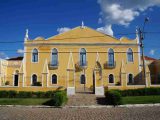
It consists of two floors, on the first floor there are three galleries; on the second floor there are upper cabins.
House of Chamber and Jail
Dating from the second half of the 18th century, it was one of the most secure jails of its time. Its gates are real fortresses.
The cells have one of the most perfect security schemes, with walls that have a thickness of one and a half meters, the keys of the cells are unique and weigh approximately half a kilo each.
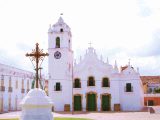
Inside is the prison chapel with the image of St. Dominic (protector of prisoners).
The building has two floors. On the upper floor worked the Chamber and on the first floor worked the Public Prison. It is currently inactive and will undergo the latest restoration reforms.
Igreja de Nossa Senhora da Expectação
Baroque style church, located in Largo do Théberge, is the Mother Church of the city. Next to the church on the hill, before the exit to Orós, is the centenary cemetery.
History of Icó in Ceará
The word Icó is of indigenous origin and means “Water or Rio da Roça”. It is the name of a Tapuia tribe of the Cariri-Icós Nation, settled on the banks of the Salgado River (CE) and the Peixe River (PB).
It is also the name of a tree of the Caparidaceae family, known as the icozeiro. Before being called this way, this land had many other names: Ribeira dos Icós, Arraial Velho, Arraial Novo, Arraial de Nossa Senhora do Ó, Sítio de Nossa Senhora do Ó dos Icós, Povoação do Salgado, Icó dos Fonsecas, Icó dos Montes and, finally, ICÓ.

Despite the resistance of the population and the reasons that, in past times, generated such a denomination, it cannot be denied that Icó is also known as the “land of the laurel”.
At the beginning of the 18th century, the indigenous tribes that inhabited the region tenaciously opposed the colonizers.
Between the mountains of Pereiro and the vast hinterlands of Cedro, Captain Major Gabriel da Silva Lago ordered the erection of a palisade to defend and protect the inhabitants of the Salgado River against the onslaughts of the Indians.
An arraial, the present-day Icó, sprang up in this place. After bloody struggles between landowners, colonizers and Indians, Father João de Matos Serra, prefect of the Missions, achieved pacification.
The settlement of Icó was founded in the early 19th century.
With the end of the fighting, the Arraial da Ribeira dos Icós flourished and developed around the Chapel of Nossa Senhora da Expectação.
The settlement and development of the region fell to the Monte and Feitosa families, who enjoyed great prestige and dominated vast areas of the territory. In 1736, the village was elevated to the category of town under the name of Arraial da Ribeira dos Icós.
The settlement of the region was the responsibility of the Monte and Feitosa families.
The village was transformed into the town of Icó, located in the most dynamic area of the Captaincy of Ceará, at a strategic point at the intersection of two important colonial communication routes: the General Road of Jaguaripe connected Ceará to Pernambuco (Port of Aracaty-Icó-Cariri) and the Road of the Boiadas or Inhamus (connection of Ceará with Piauí and Paraíba).
Also converging on Icó was the Estrada Nova das Boiadas, which ran from Sobral through the central hinterland of Ceará.
In the middle of the 18th century, the Chapel of Nossa Senhora do Ó (patron saint of the village) was built by Francisco Monte, a period in which the village achieved great economic development favored by cattle breeding, throughout the Northeast.
The village functioned as an active center for the commercialization of standing cattle due to its position as a collector and distributor in the hinterland. The fruit of this prosperity is the group of townhouses built in the historic center.
In the nineteenth century, as one of the most important commercial and cultural centers of Ceará, the village was elevated to the status of city in 1842.
1709 – The chapel starts the city
The city began with the construction of the chapel of Nossa Senhora da Expectação, whose patrimony was donated by Francisco Montes Silva in 1709, when around the chapel, the village grew.
Although historians are controversial about the reason for the construction of the chapel, BARROSO (1962:144) states that half a league of land was donated by Francisco Montes to bury a daughter, and the chapel of Our Lady of Expectation was built on the site.
1735 – Creation of the Town
On October 17, 1735, the Village was created, according to the Royal Letter of D. João VI, indicating, including, the layout of the streets, making Icó, in the coronation of Ceará, a typical city, whose temples, with ornamental baroque facades, had no similar ones and, in its wide streets, faustosas residences were erected, aligning together the others the tiled houses, as the orders from Portugal wanted.
1824 – Icó and the Confederation of Ecuador
Called the Confederation of Ecuador, the expressive but short-lived revolutionary movement of 1824 was led in Ceará by Tristão Gonçalves de Alencar Araripe and had in Icó an outstanding participation. Dissatisfied with the emperor’s excesses, the provinces of Pernambuco, Paraíba, Rio Grande do Norte and Ceará united in confederation, but were harshly repressed and violated.
The well-known separatist and republican movement, which began in Pernambuco, found great support from the people of Ceará and made Icó an ally against the imperial authoritarianism of Pedro I. The main leader of the Confederation – Joaquim do Amor Divino Rabelo, known as Frei Caneca, was shot in Recife.
In Icó, the participants of the movement were severely punished and blood washed the streets of the city. A provisional municipal government was set up, representatives of the Imperial Government appointing the so-called Matuta Commission to punish the participants in the movement.
Thus, Icó watched, saddened, the firing squad, in the public square, of those who fought against the arbitrariness of the central power and for better economic conditions for the poorest layers of the population.
1883 – 2013 – Icó, 171 years of Political Emancipation
The city of Icó completed last October 25, 2015, 173 years of political emancipation. But since 1682 there are already records of those who fought with the true owners of the land, the indigenous people of the Icós family, of the great Tupi Nation, belonging to the Confederation of the Cariris. Icó does not know how old it is.
Official history is always fragile, since it is told by the class that dominates and wants to reproduce itself always heroic. After being a tribe, around 1735, Icó became a village and then a city. Therefore, for all intents and purposes, the city today has 173 years of struggle, glory and resistance.
The counting of the years of a municipality is counted from its emancipation. However, Icó is one of the oldest cities in Ceará. Not to mention the fact that you are also one of the most beautiful in Ceará and Brazil.
Architectural and Urbanistic Set of & nbsp;Icó
In the Architectural and Urbanistic Complex of Icó-CE are the most relevant assets and the urban layout imposed by the Portuguese Crown in the 18th century.
The architectural and urbanistic ensemble of Icó – listed by Iphan in 1998 – is considered the best of the traditional architecture made in Ceará, including the popular plan.
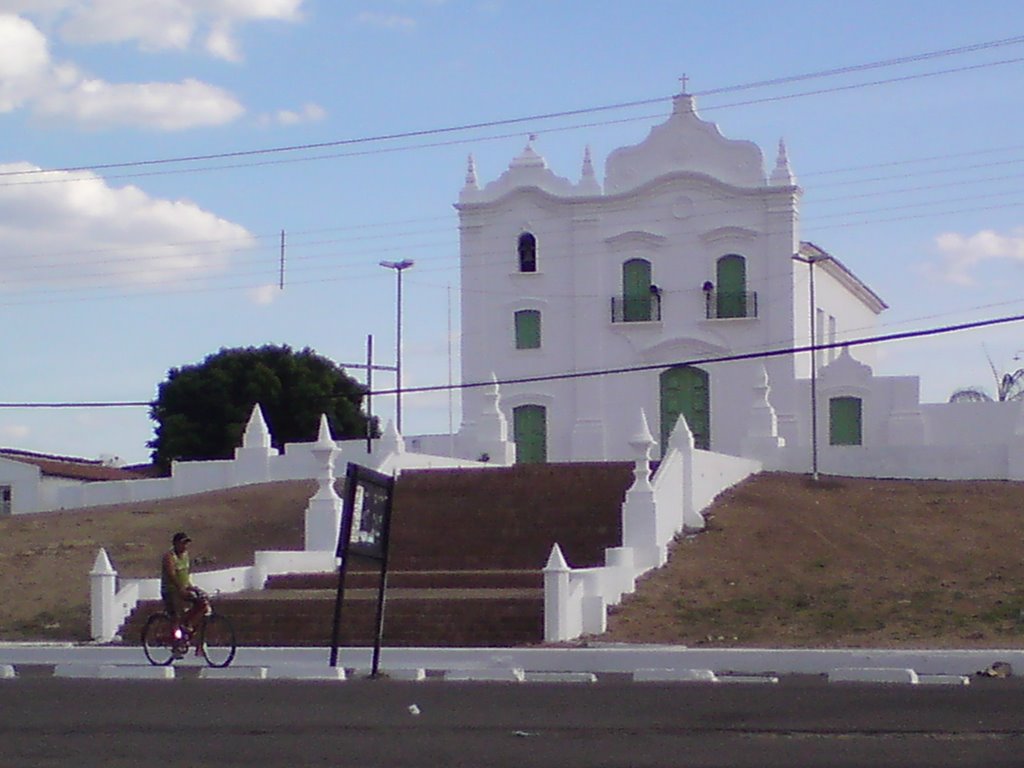
This heritage is concentrated in its main streets, where the most relevant assets and the urban layout imposed by the rules of the Portuguese Crown in the 18th century are located.
Like all the traditional architecture produced in the former Province of Ceará, Icó also excels in simplicity and simplicity. The city preserves – with great integrity – a precious architectural collection and the area delimited for protection has approximately 320 properties.
The city was the first to receive this type of listing – urban complexes protected by Iphan – and one of its greatest expressions is the historic center, which dates back to the colonial period.
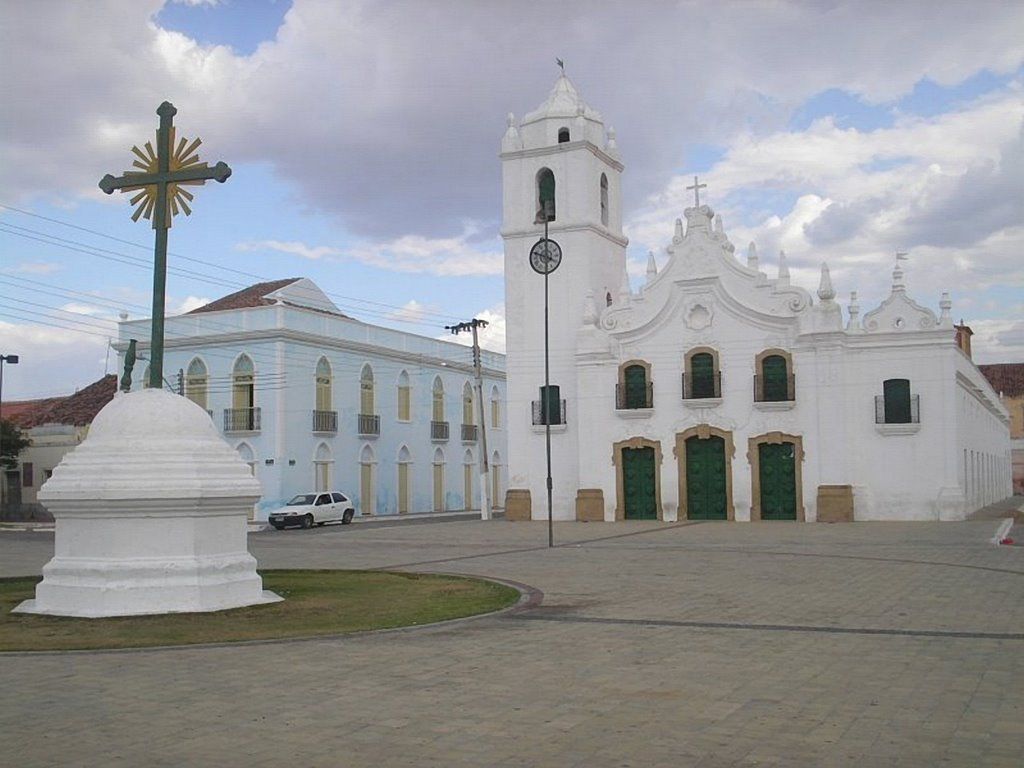
Basically formed by Portuguese and French, it inherited a rich architecture in the Baroque style with characteristics of the Northeast Region and with lines of the French neoclassical.
During the exploration of gold and the production of jerky, in the eighteenth and nineteenth centuries, Icó progressed as an important trading post in the interior of the Province of Ceará.
Numerous buildings have survived from this period, true documents of the occupation of the northeastern hinterland by cattle ranching.
Even in the oldest churches, there is no complex and sophisticated carving or stonework.
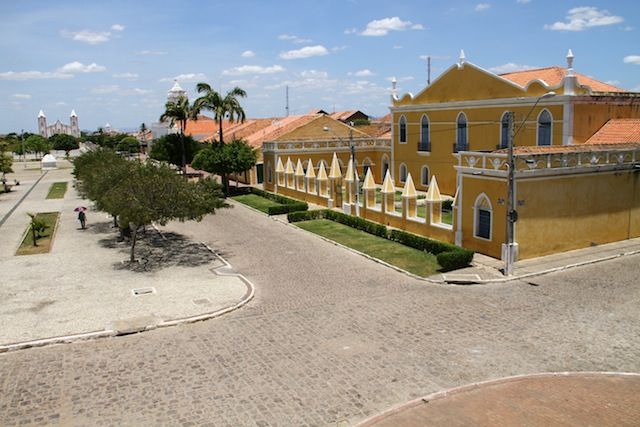
The only building with a more erudite style in the city is the Ribeira dos Icós Theater, a neoclassical building.
Some townhouses in the city, located on the oldest stretch of Rua Ilídio Sampaio, have façades with more elaborate decorative elements such as railings, fences and Portuguese tile coverings.
Also noteworthy is the plastic work on buildings constructed or remodeled between the late 19th and early 20th centuries.
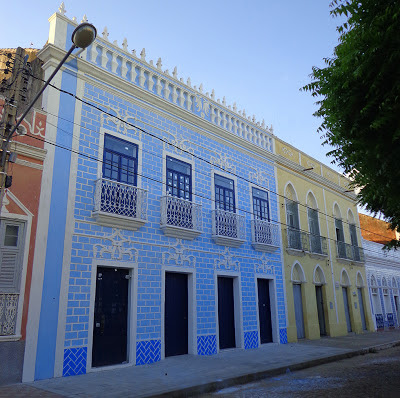
Note the ability of this architecture to adapt the basic repertoire of Brazilian architecture of the colonial period to the harsh environment and the scarcity of the hinterland.
Centralizing the cattle route, Icó became the most important trading post in the interior of the Province of Ceará.
The construction of churches, the jail, the market and townhouses with beautiful Portuguese tiles date back to this period.
Its development declined with the fall in the export of products derived from cattle breeding, as a result of successive droughts and the entry into the national market of cattle raised in the pastures of southern and southeastern Brazil.
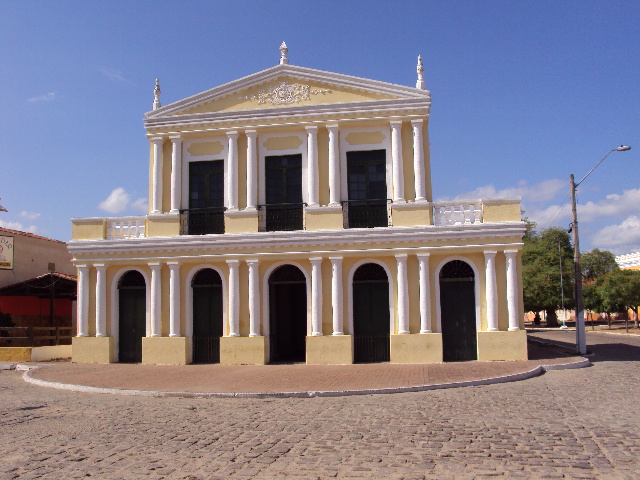
The political and economic weakening contributed to the preservation of much of the city’s architectural and urban heritage. The new area of urban expansion emerged east of the Salgado River, sparing the historic core from further alterations.
One of its characteristics is the defining feature of colonial urbanism in the region: the establishment of the city, although dependent, with its back to the Salgado River, a tributary of the Jaguaribe River. Its valuable architectural collection is mostly preserved, despite the de-characterization of the landscape, testimony to the occupation of the northeastern hinterland.
Tourism and Travel Guide of Icó in Ceará and Northeast Brazil



















